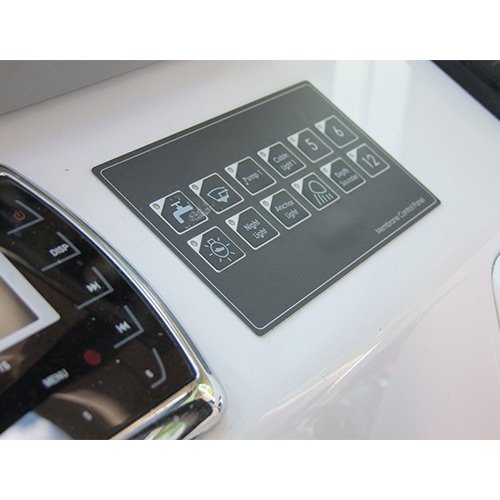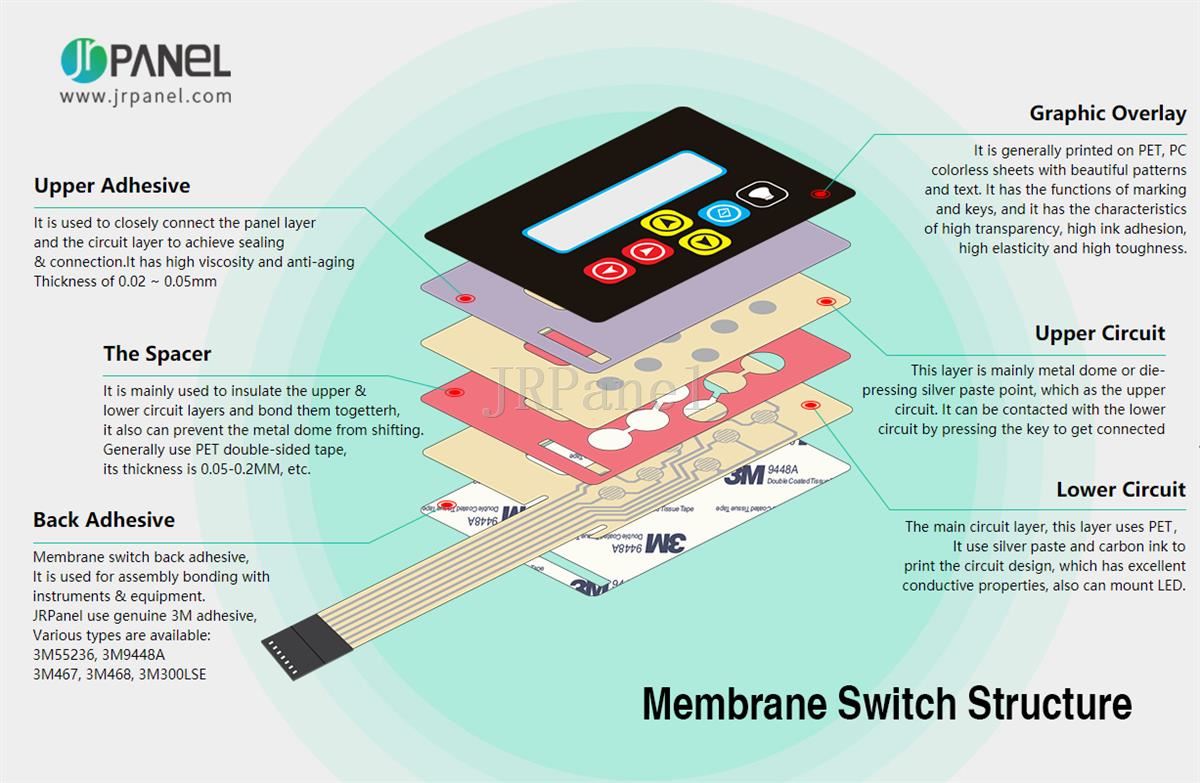Comprehending Membrane Layer Changes: The Trick to Long Lasting and Reputable Controls
Membrane layer switches over stand for an essential aspect of contemporary user interface style, blending capability with resilience in various applications. As we explore the details of membrane switches, it comes to be clear that their role in enhancing control systems is both profound and complicated, elevating questions regarding how best to utilize their capacities in future technologies.
What Are Membrane Buttons?
Membrane switches are an advanced remedy in the world of interface technology, combining functionality and style effortlessly. These gadgets function as a user interface in between users and electronic systems, incorporating numerous components right into a compact style. Generally constructed from versatile, thin layers of materials, membrane buttons are created to react to touch, enabling users to communicate with machinery and electronic gadgets effectively.
The key elements of a membrane switch include a printed circuit layer, graphic overlay, and a spacer layer that stops unplanned activation. The visuals overlay can be customized to show brand identification or user choices, boosting looks while ensuring use. Membrane switches are commonly used in various applications, including clinical devices, consumer electronics, and industrial equipment, owing to their sturdiness and resistance to environmental elements such as dampness and dust.
One of the crucial benefits of membrane layer buttons is their ability to hold up against deterioration, making them excellent for high-traffic settings. In addition, they are lightweight and call for minimal room, enabling innovative styles in product advancement. On the whole, membrane changes stand for a reliable and functional option for modern-day digital user interfaces, weding innovation with user-centric layout concepts.

Exactly How Membrane Switches Work
The procedure of membrane changes hinges on a simple yet reliable device that translates customer input into electronic signals. These switches contain multiple layers, commonly including a graphic overlay, a spacer layer, and a circuit layer. When a customer presses the button, the top layer deforms, allowing a conductive aspect in the circuit layer to make contact with a matching conductive pad on the bottom of the graphic overlay. This contact shuts the circuit and sends out a digital signal to the gadget, suggesting that the button has been turned on.
The design of membrane layer switches can vary, however they often integrate domes or tactile aspects to give comments to the individual, boosting the total experience. The materials utilized in membrane layer switches, such as polyester or polycarbonate, add to their durability and resistance to ecological aspects, consisting of wetness and dirt. Moreover, the printed circuits are typically enveloped, which secures them from damage over time.

Benefits of Membrane Switches
Among the key advantages of membrane buttons is their adaptability in design, permitting them to be customized to meet specific customer needs and aesthetic requirements. This flexibility reaches different markets, where different shapes, dimensions, and shades can be employed to improve individual communication and aesthetic charm.
Furthermore, membrane layer switches are known for their durability. Constructed from robust materials, they are resistant to dirt, dampness, and physical wear, which dramatically prolongs their life expectancy contrasted to conventional mechanical buttons. This durability makes them specifically appropriate for high-traffic atmospheres and applications Full Report calling for long life.

In addition, membrane layer buttons offer a streamlined profile, leading to a thinner style that can be incorporated into various devices without including bulk. This function not just enhances the aesthetic allure but likewise adds to an extra ergonomic item design.

Applications of Membrane Layer Buttons
Easy to use and flexible, membrane switches find applications across a wide variety of markets, consisting of clinical gadgets, customer electronics, and commercial equipment. In the clinical area, these buttons are integral to devices such as analysis devices, individual surveillance systems, and mixture pumps, where integrity and ease of cleaning are crucial. Their ability to keep and endure extreme atmospheres capability makes them ideal for such applications.
In customer electronics, membrane layer switches are utilized in items like microwaves, cleaning machines, and remotes - membrane switch. Their smooth design permits for user-friendly interface, boosting the overall individual experience while offering sturdiness and resistance to put on and tear
Commercial devices navigate to this site also profits from membrane buttons, specifically in control panels for machinery and automation systems. These buttons offer defense versus dirt and dampness, making certain regular performance in tough settings. In addition, their adjustable features allow makers to tailor them to details operational demands, boosting efficiency and performance.
Selecting the Right Membrane Layer Change
When picking a membrane button, it is vital to consider numerous aspects that affect performance and suitability for specific applications. The primary considerations include environmental conditions, responsive comments, toughness, and style specs.
First, analyze the operating environment; switches subjected to moisture, chemicals, or severe temperature levels need particular materials to guarantee durability and capability. Next off, review the demand for responsive responses. Depending upon customer communication, some applications may take advantage of a responsive feedback to confirm activation, while others might favor a non-tactile layout for aesthetic reasons.
Durability is an additional essential variable; membrane layer switches ought to be made Homepage to endure regular usage, influences, and abrasion. Make certain the chosen button can withstand the expected lifecycle, especially in high-usage situations.
Conclusion
In verdict, membrane switches over serve as essential elements in the design of durable and reliable control systems throughout numerous industries. The versatility of membrane changes permits for customized services that satisfy details operational demands, enhancing their relevance in modern technology.
Membrane layer switches over stand for an essential facet of contemporary user interface design, mixing performance with strength in various applications.Membrane buttons are an advanced remedy in the realm of customer interface technology, combining functionality and style perfectly. Typically constructed from flexible, thin layers of materials, membrane layer buttons are designed to react to touch, allowing users to communicate with machinery and digital devices properly.
The design of membrane buttons can differ, however they often integrate domes or responsive elements to supply responses to the individual, enhancing the general experience.In conclusion, membrane layer changes serve as vital components in the design of long lasting and reliable control systems across different sectors.